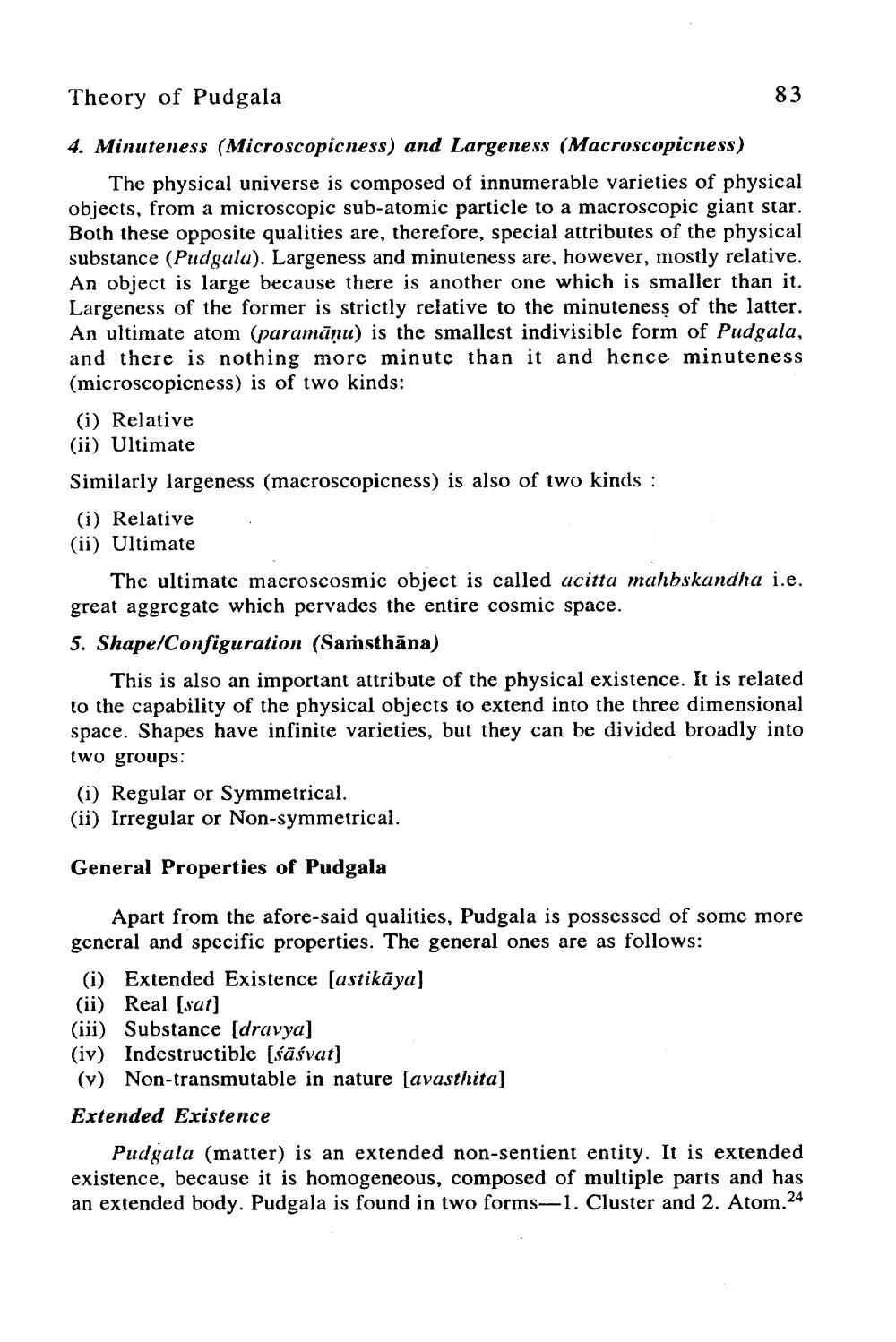________________
Theory of Pudgala
83
4. Minuteness (Microscopicness) and Largeness (Macroscopicness)
The physical universe is composed of innumerable varieties of physical objects, from a microscopic sub-atomic particle to a macroscopic giant star. Both these opposite qualities are, therefore, special attributes of the physical substance (Pudgala). Largeness and minuteness are, however, mostly relative. An object is large because there is another one which is smaller than it. Largeness of the former is strictly relative to the minuteness of the latter. An ultimate atom (paramāņu) is the smallest indivisible form of Pudgala, and there is nothing more minute than it and hence minuteness (microscopicness) is of two kinds: (i) Relative (ii) Ultimate Similarly largeness (macroscopicness) is also of two kinds : (i) Relative (ii) Ultimate
The ultimate macroscosmic object is called acitta mahbskandha i.e. great aggregate which pervades the entire cosmic space. 5. Shape/Configuration (Saṁsthāna)
T
.
This is also an important attribute of the physical existence. It is related to the capability of the physical objects to extend into the three dimensional space. Shapes have infinite varieties, but they can be divided broadly into two groups:
(i) Regular or Symmetrical. (ii) Irregular or Non-symmetrical.
General Properties of Pudgala
Apart from the afore-said qualities, Pudgala is possessed of some more general and specific properties. The general ones are as follows:
(i) Extended Existence [astikāya) (ii) Real (sat] (iii) Substance [dravya] (iv) Indestructible (śäśvat] (v) Non-transmutable in nature [avasthita) Extended Existence
Pudgala (matter) is an extended non-sentient entity. It is extended existence, because it is homogeneous, composed of multiple parts and has an extended body. Pudgala is found in two forms-1. Cluster and 2. Atom.24




